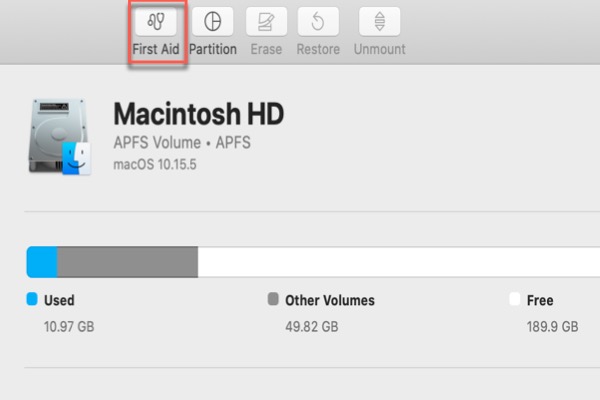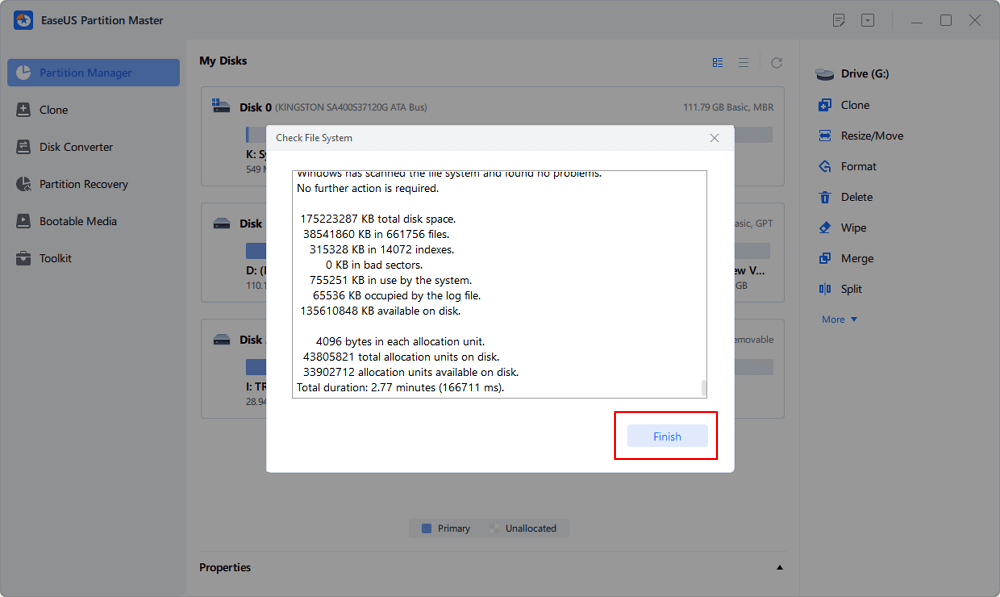

- #How to run a disk check on a mac how to
- #How to run a disk check on a mac code
- #How to run a disk check on a mac password
- #How to run a disk check on a mac mac
#How to run a disk check on a mac mac
(If recovery mode doesn’t appear, restart your Mac and try pressing the keys again.) Your Mac will load straight into recovery mode. You’ll see a progress bar appear, and you can release the keys after you do. Press and hold the “Command+R” keys while it’s booting. Your Mac will be able to fix errors on your system drive from recovery mode. From there, you can use Disk Utility in the same way. The solution is to boot into a special recovery mode. It can’t make changes to that system drive while it’s running from it. This is because it’s running in “live mode” - examining the disk while the operating system is running from it. However, in some cases, your Mac may find disk or file system problems and be unable to repair them when you perform the above steps. Ideally, that should be the end of it - especially if you used the safe mode trick above. RELATED: 8 Mac System Features You Can Access in Recovery Mode When it’s done logging in and you see a desktop, the disk check is done. This will make the login process take longer than normal, so be patient.
#How to run a disk check on a mac password
Sign in with your password and your Mac will then check your disks. To do this, restart your Mac and hold “Shift” while it’s booting. Safe Mode, sometimes called “Safe Boot,” contains an automatic startup check and repair that can fix these problems.

One simple way to fix such errors is to boot your Mac into Safe Mode. RELATED: Troubleshoot Your Mac With These Hidden Startup Options
#How to run a disk check on a mac code
An exit code of “0” is a good thing, and means no errors were found. You’ll see messages like “Storage system check exit code is 0” and “File system check exit code is 0” here.

You can click the “Show Details” drop-down message to view detailed information about any errors it encounters. If it finds any errors, it will attempt to automatically fix them for you. It depends which you select in the sidebar.Ĭlick “Run” and your Mac will check the disk you selected for errors.
#How to run a disk check on a mac how to
For information about servicing your Mac, see Find out how to service or repair your Mac.You can either run the First Aid function on an entire disk, or an individual partition on that disk. If you continue to have problems with your disk or it can’t be repaired, it may be physically damaged and need to be replaced. If your Mac has a Fusion Drive and you see a flashing question mark or alert, see the troubleshooting section of the Apple Support article About Fusion Drive, a storage option for some Mac computers. If that doesn’t work, back up as much of your data as possible, reformat the disk, reinstall macOS, then restore your backed-up data. If Disk Utility can’t repair your disk, or you receive a report that the First Aid process failed, try to repair the disk or partition again. If it contains information you need, open it and examine its data to make sure it hasn’t been corrupted. If you can replace a file or re-create it, delete it. Most of the files in the list have aliases in a DamagedFiles folder at the top level of your disk. You need to check each file in the list of affected files. If Disk Utility reports “overlapped extent allocation” errors, two or more files occupy the same space on your disk, and at least one of them is likely to be corrupted. Otherwise, you may need to do one of the following. You can click Show Details to see more information about the repairs. If Disk Utility reports that the disk appears to be OK or has been repaired, you’re done. In the sidebar, select the storage device, then click the First Aid button. Repeat steps 6 through 8 for each container on the storage device. In the sidebar, select a container, then click the First Aid button.

Repeat steps 2 through 4 for each volume on the storage device. When the First Aid process is complete, click Done. In the First Aid dialog, click Run, then follow the onscreen instructions. In the sidebar, select a volume, then click the First Aid button. If you check your startup volume (Macintosh HD), make sure you also check your data volume (Macintosh HD - Data). Note: If you’re checking your startup disk or startup volume, restart your computer in macOS Recovery, select Disk Utility in the macOS Recovery window, then click Continue.


 0 kommentar(er)
0 kommentar(er)
